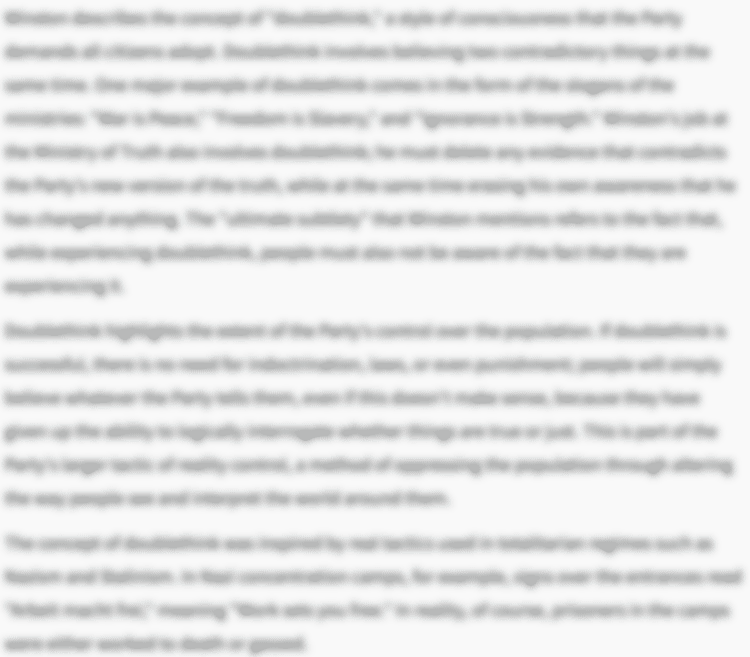The most important symbol in the book is also its central subject: the periodic table of elements. This table contains all known chemical elements, the building blocks of the entire universe, and thus symbolizes all that can be captured by scientific knowledge. At the same time, Kean emphasizes that the table is not a wholly natural entity. It is also a human invention, with an assortment of very human stories attached to it. In this way, the table also represents the confluence of humankind and the natural world. Early in the book, Kean argues that the table is a kind of “storybook” and he proceeds to tell some of the many stories contained within the table over the course of the text. Of course, this assertion is a metaphor: to most people, the periodic table does not remotely resemble a storybook but instead looks like a rather dry scientific chart patterned with a jumble of letters and numbers. Part of what Kean aims to achieve in the book is to show that this dull veneer hides a much richer truth filled with surprising, entertaining, heart-warming, tragic, and terrifying stories.
Indeed, Kean’s depiction of the periodic table very much emphasizes its human side alongside scientific descriptions of how the different elements function and how they came to be arranged in this particular order. He describes the table as a “castle,” which underlines its manmade quality. At the same time, Kean emphasizes that the table is also not really manmade. This becomes most clear in his descriptions scientists’ efforts to find unknown elements and how elements thwart these efforts, evading capture. Ultimately, Kean shows that the periodic table is neither totally a human invention nor totally a natural entity—rather, it is both, and this is one of the many reasons why it is so fascinating.
The Periodic Table Quotes in The Disappearing Spoon
I latched on to those tales, and recently, while reminiscing about mercury over breakfast, I realized that there’s a funny, or odd, or chilling tale attached to every element on the periodic table. At the same time, the table is one of the great intellectual achievements of humankind. It’s both a scientific accomplishment and a storybook, and I wrote this book to peel back all of its layers one by one, like the transparencies in an anatomy textbook that tell the same story at different depths.

Unlock explanations and citation info for this and every other The Disappearing Spoon quote.
Plus so much more...
Get LitCharts A+The periodic table is, finally, an anthropological marvel, a human artifact that reflects all of the wonderful and artful and ugly aspects of human beings and how we interact with the physical world—the history of our species written in a compact and elegant script.
People are used to reading from left to right (or right to left) in virtually every human language, but reading the periodic table up and down, column by column, as in some forms of Japanese, is actually more significant. Doing so reveals a rich subtext of relationships among elements, including unexpected rivalries and antagonisms. The periodic table has its own grammar, and reading between its lines reveals whole new stories.
The discovery of eka-aluminium, now known as gallium, raises the question of what really drives science forward—theories, which frame how people view the world, or experiments, the simplest of which can destroy elegant theories.
The human mind and brain are the most complex structures known to exist. They burden humans with strong, complicated, and often contradictory desires, and even something as austere and scientifically pure as the periodic table reflects those desires. Fallible human beings constructed the periodic table, after all […] The periodic table embodies our frustrations and failures in every human field: economics, psychology, the arts, and—as the legacy of Gandhi and the trials of iodine prove—politics. No less than a scientific, there’s a social history of the elements.
Like any human activity, science has always been filled with politics—with backbiting, jealousy, and petty gambits. Any look at the politics of science wouldn’t be complete without examples of those. But the twentieth century provides the best (i.e., the most appalling) historical examples of how the sweep of empires can also warp science. Politics marred the careers of probably the two greatest women scientists ever, and even purely scientific efforts to rework the periodic table opened rifts between chemists and physicists.
As science grew more sophisticated throughout its history, it grew correspondingly expensive, and money, big money, began to dictate if, when, and how science got done.
Not every breakthrough in periodic-table science has to delve into exotic and intricate states of matter like the BEC. Everyday liquids, solids, and gases still yield secrets now and then, if fortune and the scientific muses collude in the right way. According to legend, as a matter of fact, one of the most important pieces of scientific equipment in history was invented not only over a glass of beer but by a glass of beer.
I wish very much that I could donate $1,000 to some nonprofit group to support tinkering with wild new periodic tables based on whatever organizing principles people can imagine. The current periodic table has served us well so far, but reenvisioning and recreating it is important for humans (some of us, at least). Moreover, if aliens ever do descend, I want them to be impressed with our ingenuity. And maybe, just maybe, for them to see some shape they recognize among our own collection.












